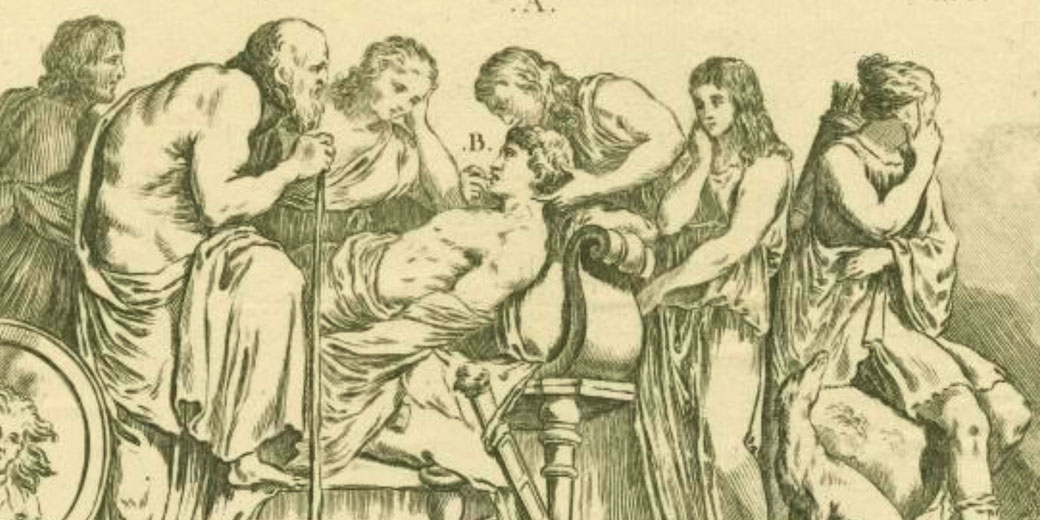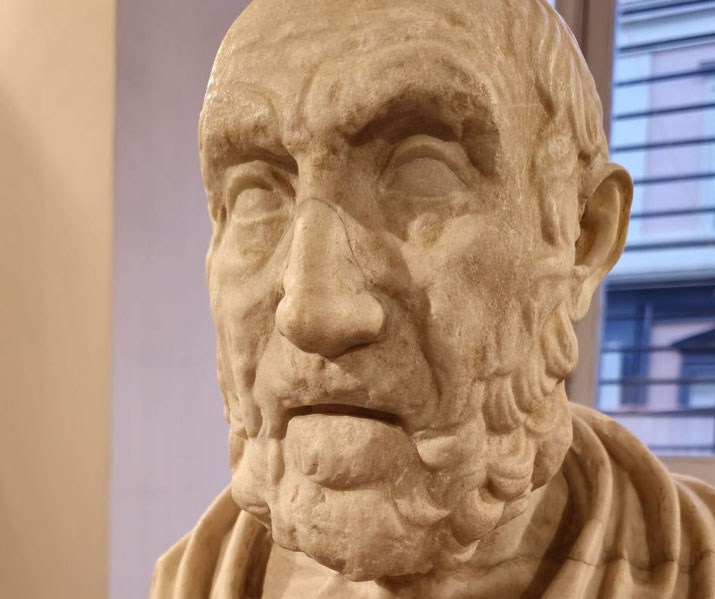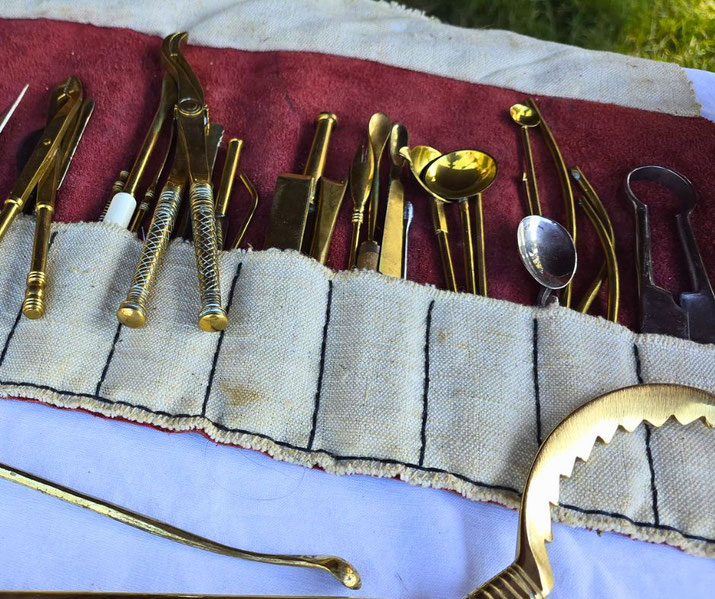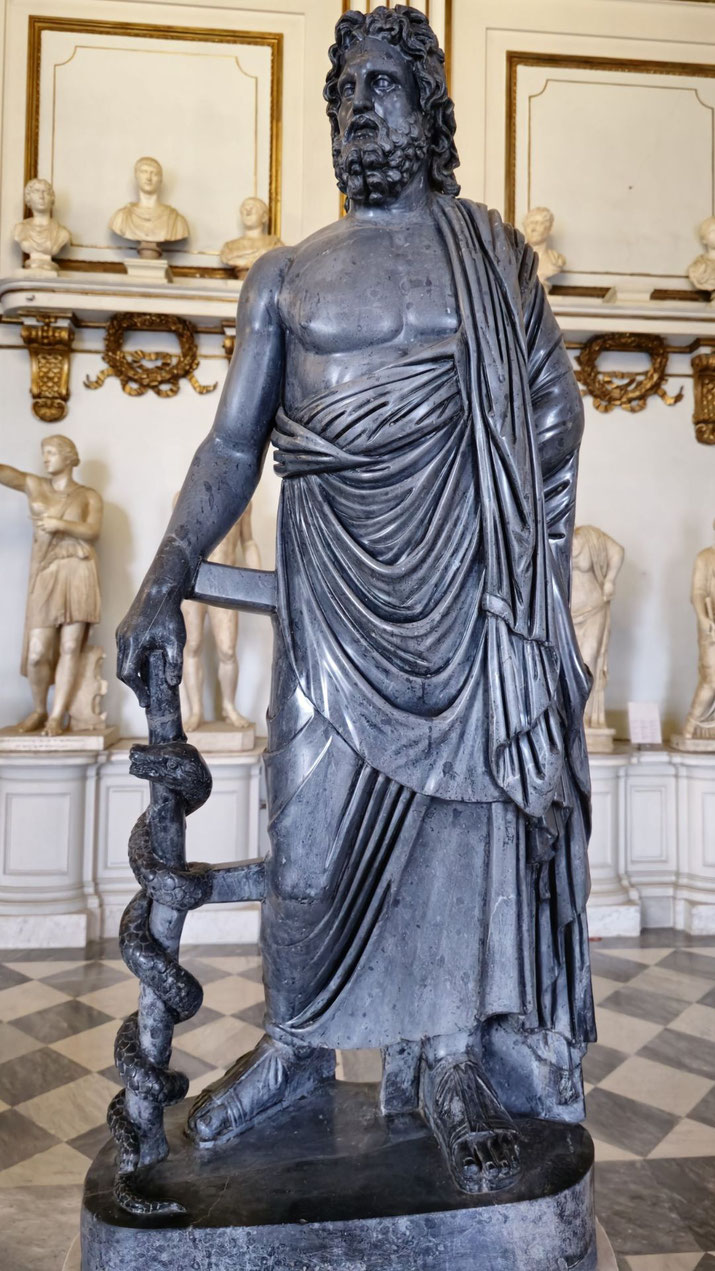The repulsive and bizarre medical practices of the ancient Romans

The ancient Romans are famous for their significant contributions to the fields of politics, engineering, art, and warfare.
However, we should be grateful that we have not retained their understanding of medicine. While some Roman medical practices seem similar to those in our modern healthcare systems, others sound downright dangerous.
From surgical procedures that seem almost avant-garde to herbal remedies that border on the mystical, Roman medicine was a complex blend of empirical knowledge, religious beliefs, and cultural traditions.
Where did the Romans gain their medical knowledge?
The Roman Empire, at its zenith, was a sprawling geopolitical entity that stretched from the British Isles to North Africa and from the Iberian Peninsula to the Middle East.
This vast expanse was a melting pot of various cultures, philosophies, and sciences.
Medicine in ancient Rome was deeply influenced by the knowledge inherited from earlier civilizations, most notably the Greeks and Egyptians.
Greek physicians like Hippocrates laid the philosophical groundwork for Roman medicine, emphasizing the importance of natural causes and treatments for diseases.
Meanwhile, Egyptian medicine, with its focus on surgery and anatomy, also found its way into Roman practices.
With this background of medical knowledge, Roman physicians were innovators in their own right.
This meant that they built upon existing theories and practices, adding layers of complexity and nuance of their own.
Roman medicine was a blend of the empirical and the spiritual, often incorporating religious rituals and prayers alongside more practical treatments like herbal remedies and surgical procedures.

What to expect when visiting a Roman doctor
If you were to step back in time and find yourself in need of medical attention in ancient Rome, your experience would be both familiar and foreign.
Firstly, while ancient Roman doctors could visit you at home, you could also meet them in their own house.
During your appointment, you'd likely first notice an array of surgical instruments, jars of herbs, and possibly even astrological charts adorning the walls.
The atmosphere would be a mix of scholarly seriousness and religious reverence, as many Roman physicians were also well-versed in religious rituals and astrology.
Diagnosing your illness
Physicians would typically begin with a detailed patient history, asking about symptoms, lifestyle, and even dreams, which were believed to offer insights into a person's health.
The physician would then proceed to examine you, employing a variety of diagnostic methods that could include pulse reading, urine analysis, and physical palpation.
Pulse reading was borrowed from Greek medical practices, and Roman doctors developed intricate classifications for different types of pulses, believing that each could indicate specific ailments.
Don't be surprised if the doctor drinks some of your urine, since they believed that certain tastes and different shades of yellow could be matched to specific diseases.
While this may seem strange to modern sensibilities, it's worth noting that urine tests are still used regularly today, but are conducted with far more scientific rigor.
Astrology and divination also played a role in Roman diagnostics. The positions of the planets and stars were thought to influence human health, and some physicians would consult astrological charts as part of their diagnostic process.
Similarly, omens and portents, often interpreted by religious priests, could influence a physician's diagnosis and subsequent treatment plan.
What cures and medicines did the Romans have?
Roman physicians had a surprisingly wide array of treatments for various ailments.
Herbs like sage, rosemary, and mint were commonly used for their antiseptic and anti-inflammatory properties.
More exotic ingredients, such as opium poppy and henbane, were employed for their sedative effects, often used as rudimentary forms of pain relief or anesthesia.
Physicians also prescribed more peculiar remedies, such as crushed earthworms for wounds or mouse dung for toothaches.
Some treatments even bordered on the alchemical, involving complex processes to create elixirs and salves that combined multiple ingredients, each believed to have its own unique properties.
The recipes for these concoctions were often closely guarded secrets, which were passed down through generations of doctors.
In fact, the preparation and administration of these remedies was considered an art form, which could often be accompanied by specific rituals or prayers.
The timing of the treatment could also be crucial; some remedies were believed to be more effective if administered at certain times of the day or during specific astrological alignments.
This reflected the broader Roman belief in the interconnectedness of the natural and celestial worlds, a theme that recurs across various aspects of Roman medicine.
Time for some surgery. Brace yourself...
If you required surgery, the Romans could draw upon an array of instruments, including scalpels, forceps, and even specialized tools for procedures like cataract removal.
Many of these instruments would not look entirely out of place in a modern surgical suite.
However, it's crucial to remember that these procedures were conducted without the benefits of modern anesthesia or antiseptics, making surgery a painful and risky endeavor.
One of the most well-documented surgical procedures from ancient Rome is trepanation—the practice of drilling holes into the skull to relieve pressure or treat various neurological conditions.
While the thought of such an operation without anesthesia may be horrifying to us today, there is evidence to suggest that many patients survived the procedure, as ancient skulls have been found with signs of bone regrowth around the surgical sites.
The surgical treatment of battlefield injuries, including amputations, was also relatively advanced, especially within the Roman military, which had its own medical corps and field hospitals.
Roman surgeons were also known to perform more cosmetic procedures, such as the removal of moles or the repair of damaged ears.
They clearly had a concern for physical appearance as well as a person's health needs.
Dental surgery, too, was not uncommon, with evidence of dental implants and the use of gold wire to repair loose teeth.

What role did religion play in Roman medicine?
In ancient Rome, the line between medicine and religion was often blurred.
They had a worldview where the divine and the earthly were closely connected.
Specifically. the gods were believed to have a direct influence on human health.
So, invoking their favor was considered just as crucial as any herbal remedy or surgical procedure.
Temples dedicated to Asclepius, the god of medicine, were common throughout the Roman Empire, such as the one on Tiber Island in Rome itself.
These often functioned as healing centers. Patients would visit these temples to offer sacrifices, prayers, and votive offerings in the form of body parts made from terracotta, symbolizing the area that required healing.
After rituals and prayers, patients would often sleep within the temple precincts, hoping to receive a dream that would reveal the cure to their ailments—a practice known as "incubation".
But it wasn't just the gods who were thought to have a say in matters of health.
Various spirits, omens, and supernatural entities were also believed to influence well-being.
Amulets and talismans featuring inscriptions or images of gods and mythical creatures were commonly worn to ward off such illness and evil spirits.
The most common spiritual threat came from something called the "evil eye": a malevolent gaze believed to cause misfortune.
It was such a pervasive superstition that many charms and incantations have been unearthed that were made for people to wear on necklaces in order to protect against it.
Superstitions also extended to the realm of pharmacology and surgery. Certain remedies were believed to be more effective if prepared under the light of a full moon or during a particular astrological sign.
In addition, it was not uncommon for surgeons to offer prayers or sacrifices to the gods before commencing a risky operation.

Congratulations, you survived! Now pay up...
The Romans were quite advanced in their thinking when it came to general public health.
Even before you needed medical intervention, they tried to keep their cities clean and healthy by building systems of aqueducts, sewers, and public baths.
The Roman government believed that infrastructure like this was an extension of their focus on civic responsibility and the well-being of the state.
For modern observers, the remains of these massive building projects are our best evidence of Roman engineering skill.
However, access to healthcare was not particularly equitable. While the wealthy could afford personal physicians and the best treatments available, the poor often had to rely on less effective remedies or superstitious practices.
This also extended to gender and social status. Women, for example, had limited access to healthcare and were often treated by midwives rather than trained physicians.
Slaves, too, received only the most rudimentary medical care, aimed more at preserving their economic value than their well-being.
Moreover, the medical texts and treatises that have survived reveal much about the educational and linguistic changes across the Roman Empire.
Written in Latin or Greek, these works were the preserve of the educated elite, underlining the role of language and literacy in determining who had access to medical knowledge.
Often, these texts were both medical guides and literary works, often written in poetic or philosophical language.
How we know about Roman medicine: Surviving texts
Perhaps the most famous Roman doctor was Galen, a physician whose comprehensive medical texts became the definitive source of medical knowledge for centuries.
Born in Pergamon but practicing mostly in Rome, Galen was a prolific writer, and his works covered topics ranging from anatomy and physiology to pharmacology and ethics.
His theories, particularly the concept of the four humors—blood, phlegm, black bile, and yellow bile—as the basis for understanding health and disease, dominated European medicine well into the Renaissance.
Another significant figure is Celsus, known for his encyclopedic work "De Medicina".
Though not a physician himself, Celsus compiled a vast array of medical knowledge, offering insights into Roman medical practices and theories.
His work was so influential that it was one of the first medical texts to be printed during the Renaissance, ensuring its continued relevance for generations of physicians.
Finally, Soranus of Ephesus was another influential physician, particularly in the field of obstetrics and gynecology.
His works provide valuable insights into Roman practices related to childbirth and women's health, topics that were often overlooked in other contemporary medical texts.
Rare medical texts like these only survived because they were painstakingly copied by hand and stored in libraries during the Middle Ages.
It has meant that they would be accessible to those who were literate and were able to purchase expensive books.
However, the knowledge would trickle down the socio-economic ladder to influence the medical practices of physicians throughout the Roman Empire and beyond.
What do you need help with?
Download ready-to-use digital learning resources
Copyright © History Skills 2014-2025.
Contact via email
With the exception of links to external sites, some historical sources and extracts from specific publications, all content on this website is copyrighted by History Skills. This content may not be copied, republished or redistributed without written permission from the website creator. Please use the Contact page to obtain relevant permission.





